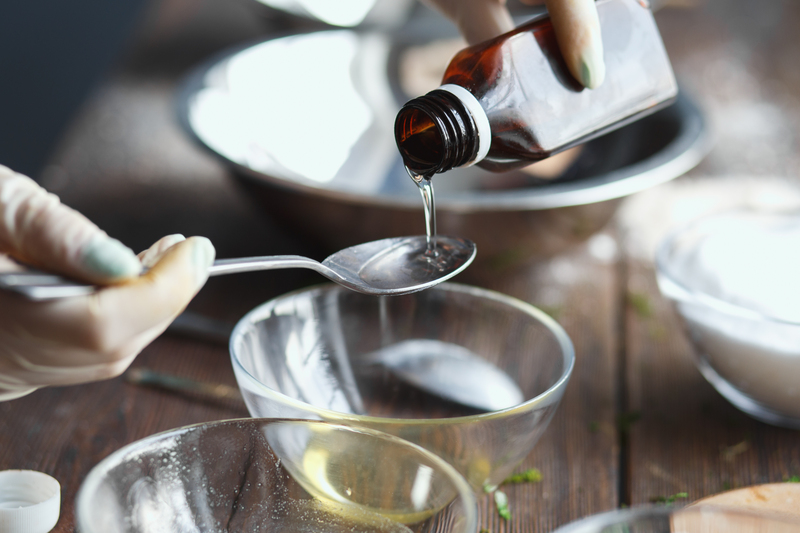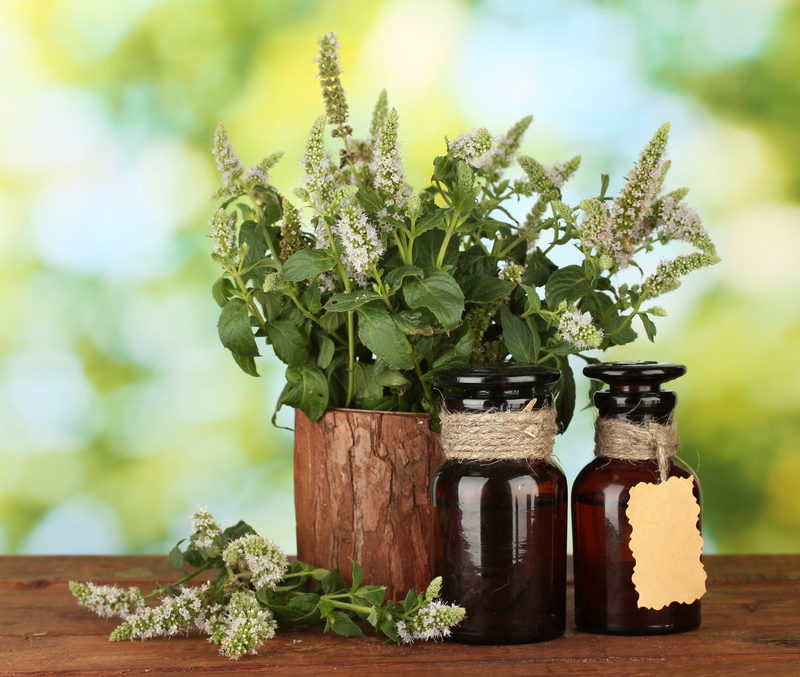Refine Your Car Cleaning Skills to Professional Standards
Posted on 15/09/2025
Refine Your Car Cleaning Skills to Professional Standards
Keep your vehicle in pristine condition and boost its lifespan by refining your car cleaning skills to professional standards. Many car owners simply settle for a quick wash, but if you wish to truly elevate your car's appearance and value, mastering the art of professional auto detailing is essential. This comprehensive guide covers step-by-step methods, expert tips, and product recommendations to help you achieve showroom-level cleanliness at home.
Why Strive for Professional-Standard Car Cleaning?
Moving beyond basic washes offers a range of significant advantages:
- Boosts resale value: A spotless, well-maintained car attracts buyers and commands higher prices.
- Enhances driving experience: A clean interior and streak-free windows improve comfort and safety.
- Protects paintwork: Thorough cleaning reduces the risk of scratches, oxidation, and contamination.
- Prevents long-term damage: Removing contaminants like bird droppings, sap, and road salt prevents corrosion and staining.

Essential Supplies for Professional-Level Car Cleaning
Before you start, equip yourself with the right supplies. Quality tools and products make a huge difference:
- Microfiber towels (various sizes)
- Two-bucket wash system with grit guards
- Soft-bristled brushes (for wheels and interior)
- pH-balanced car shampoo
- Clay bar and lubricant
- Dual-action polisher (optional)
- Car polish and wax or paint sealant
- Vacuum cleaner (with attachments)
- Interior cleaner (for plastic, leather, and fabric)
- Glass cleaner
- Tire and trim dressing
Investing in professional-grade products and keeping dedicated cleaning tools vastly refines your car cleaning techniques, elevating your results.
Step-By-Step Guide: How to Clean Your Car Like a Pro
1. Preparation and Pre-Wash Inspection
- Choose a shaded area -- Avoid direct sunlight to prevent water spots and product evaporation.
- Inspect your vehicle for tough stains, tar, tree sap, bug splatter, and bird droppings -- address these before washing.
Tip: Remove personal items from the interior and trunk to make cleaning easier.
2. Wheels and Tires First
Always start with the wheels -- they're the dirtiest part and will splash onto cleaned surfaces otherwise.
- Rinse wheels and tires with a strong water stream.
- Apply a dedicated wheel cleaner. Use a soft brush to agitate.
- Scrub tire sidewalls to remove old dressing and grime.
- Rinse thoroughly before moving to the paintwork.
3. The Two-Bucket Paintwork Wash
This classic method minimizes swirls and scratches.
- *One bucket* for soapy water; *one for rinsing your mitt*.
- Fill with **grit guards** at the bottom to trap dirt.
- Use a plush microfiber or lambswool mitt, never sponges.
- Work from top downward -- roof, windows, upper panels, then lower sides.
- Rinse the mitt frequently in the clean water bucket.
Avoid circular motions -- wash in straight lines to reduce swirl marks.
4. Rinse and Dry Properly
- Rinse the entire car with clean water, ensuring all soap is gone.
- Dry immediately with clean, plush microfiber towels.
- Blot rather than drag towels to prevent streaks and scratches.
- Use compressed air or a dedicated blower for crevices and emblems.
5. Decontamination: Clay Bar Treatment
Even after washing, microscopic contaminants cling to your paint. A clay bar restores a "like-new" surface:
- Flatten a piece of clay and lubricate the paint (use spray detailer or clay lube).
- Gently rub the clay over the surface in straight lines.
- Regularly check the clay -- fold to reveal a clean surface as it becomes dirty.
The result? An ultra-smooth surface that's ready for polishing and waxing.
6. Polishing: Restore Paint Clarity
- Assess whether your car needs polishing -- look for swirls, dullness, or minor scratches.
- Apply polish by hand or with a dual-action polisher in small sections.
- Buff off residue with a clean microfiber towel.
This step isn't always required after every wash, but for maximum shine, polishing is vital!
7. Protect with Wax or Sealant
- Choose a natural carnauba wax for deep gloss, or a synthetic sealant for long-lasting protection.
- Apply a thin, even layer as per product instructions.
- Allow it to haze, then buff off to a shine.
This protective coat repels water, resists UV damage, and keeps the finish vibrant for weeks to months.
8. Detailing the Interior: The Professional Touch
Interior detailing preserves comfort and health, and keeps your car smelling fresh.
- Vacuum thoroughly -- carpets, mats, seats, under and between seats.
- Use soft brushes or nozzles for vents, seams, and tight areas.
- Wipe all surfaces with appropriate cleaners (plastic, vinyl, fabric, or leather).
- Condition leather and plastic trims to prevent drying and cracking.
- Clean windows and glass with a lint-free towel and glass cleaner.
Never use household glass cleaner on tinted film -- ammonia can damage it.
9. Final Touches
- Dress tires and exterior trim to restore blackness and protect against fading.
- Polish chrome, badges, tailpipes, and other metal accents.
- Inspect your work in good light for missed spots or streaks.
Car Cleaning Skills: Pro Tips & Advanced Techniques
Learn to Spot Clean Like an Expert
- Treat stains immediately -- sugar-based spills, coffee, tar, and tree sap are easiest to remove if cleaned quickly.
- Use the right removal agents: tar remover for asphalt, enzyme cleaner for organic stains, isopropyl alcohol for sap.
- *Never scrub vigorously*, especially on fabric or painted surfaces. Blot and use soft brushes.
Mastering Upholstery and Carpet Cleaning
- For serious stains or odors, use a dedicated carpet extractor or steam cleaner.
- Lightly mist with fabric cleaner, agitate with a soft brush, and vacuum out the residue for deep hygiene.
- Regular cleaning prevents mildew, bacteria, and persistent odors.
Refine Your Engine Bay Detailing
- If detailing your engine, start with a cool engine. Cover sensitive components (alternators, intakes) with plastic.
- Use a gentle degreaser and soft brushes; rinse shallowly and dry fully afterward.
- A clean engine bay looks impressive and makes servicing easier.
Trim and Plastic Restoration Tricks
- Faded plastics can be rejuvenated with trim restorers or dye products -- just clean them thoroughly first.
- UV protectant sprays help keep plastics from drying, cracking, or graying under sunlight.
Maintaining Your Professional Cleaning Results
Now that you've achieved a pro-level clean, implement these easy habits to keep your vehicle looking its best:
- Use a quality car cover, especially if you park outside.
- Quickly rinse off bird droppings or tree sap to avoid paint damage.
- Vacuum interiors every two weeks.
- Maintain wax or sealant protection every few months.
- Top up tire dressings and trim protectants as needed.
Consistency is key -- a little upkeep ensures your hard work pays off for the long term.
Common Car Cleaning Mistakes to Avoid
- Using dish soap -- It strips paint protection. Always use automotive shampoo.
- Cleaning in the sun -- Accelerates water spotting and causes streaking.
- One-bucket washing -- Reuses dirty water, increasing the risk of swirls.
- Using the wrong towels -- Lint, rough towels, or old t-shirts cause micro-scratches. Always use quality microfiber.
- Ignoring tight areas -- Vents, seams, and badges collect grime and mold.
By avoiding these pitfalls, you refine your skills and protect your car far more effectively.
Recommended Products for Professional Car Cleaning
What the pros use inevitably makes a difference. Look for trusted brands and products:
- Car shampoos: Chemical Guys, Meguiar's, Griot's Garage
- Microfiber towels: Kirkland, The Rag Company
- Clay bars: Mothers, Meguiar's
- Wax & Sealants: Collinite, Turtle Wax, Adam's Polishes
- Wheel cleaners: Sonax, P&S Brake Buster
*Always read instructions and test new products on a small area first.*

Should You Consider Professional Detailing?
While refining your own cleaning skills to a professional level is rewarding and cost-effective, certain jobs (deep stain removal, headlight restoration, paint correction) are best left to the pros occasionally. An annual professional detail can revive your car while teaching you new methods to apply yourself.
Final Thoughts: Transform Your Car Care Routine
Learning to refine your car cleaning skills to professional standards is one of the most worthwhile investments you can make in your vehicle's longevity, comfort, and appearance. With the right knowledge, systematic techniques, and proper products, you'll not only preserve your car's value but also enjoy the pride of ownership that comes from a well-maintained vehicle. Start today and experience the satisfaction of driving a car that's always a cut above the rest!





